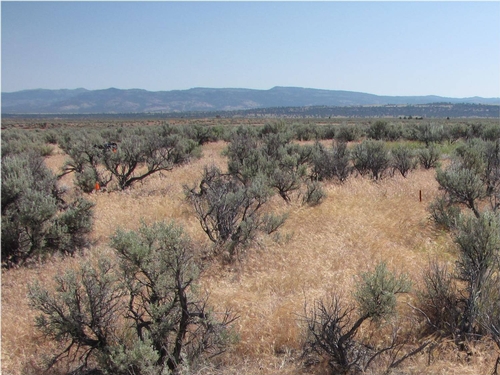
In a Great Basin sagebrush community, low rates of glyphosate applied at the medusahead tillering stage in late April to early May provided excellent control of medusahead. At this timing, we achieved at least 95% control of medusahead cover and a corresponding reduction in seed production with 4 oz Roundup per acre in 2009 and 9 oz Roundup per acre in 2010. These rates are far lower than those required to control perennial species and provide a more cost effective option to ranchers and land managers compared to other herbicide treatments. Earlier applications required significantly higher rates, probably due to reduced glyphosate activity in cooler temperatures. Later applications (close to heading) also gave excellent control although at slightly higher rates. However, late application timing not only provided less competitive release and increased injury of desirable understory species but also increased the risk of wildfire due to the accumulation of fine fuels from dead medusahead growth during that season. A potential negative aspect to the middle application timing is the overlapping timing with big sagebrush bud break. This level of injury did not cause plant death, but did suppress the current year shoot tip growth. While a single year of timely glyphosate treatment can provide excellent control in the year of application, medusahead seedbanks are capable of reestablishing invasive populations the following year. As such, a multi-year commitment will be required to deplete the soil seedbank and prevent new seed production. See the attached Powerpoint presentation for more details (click on title to see link to powerpoint). This project is part of a large cheatgrass (downy brome) and medusahead Ecologically-Based Invasive Plant Management program. The link will provide additional information.
Attached Files: